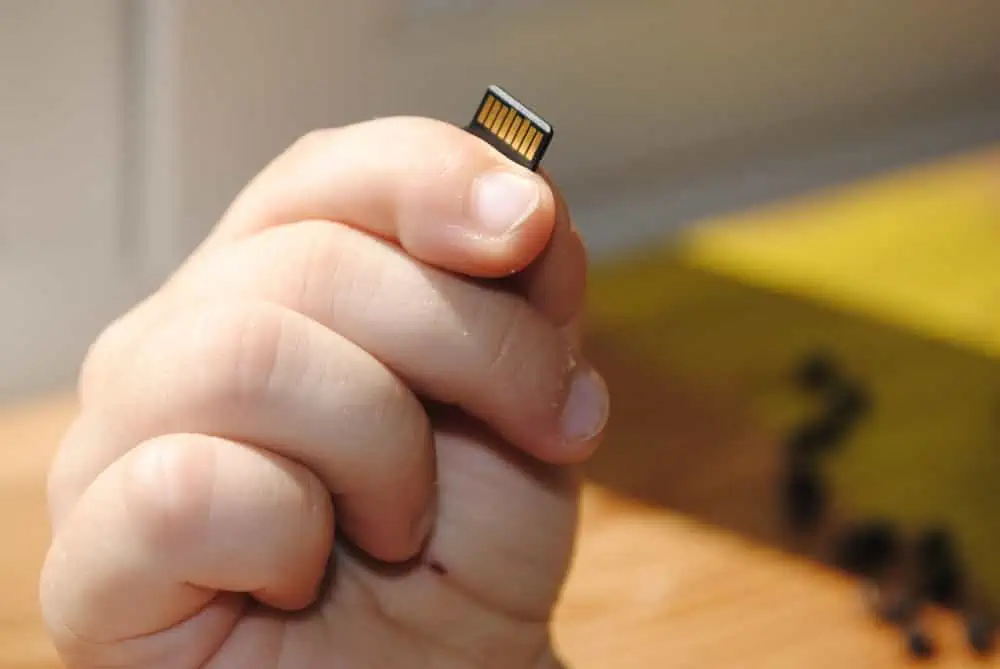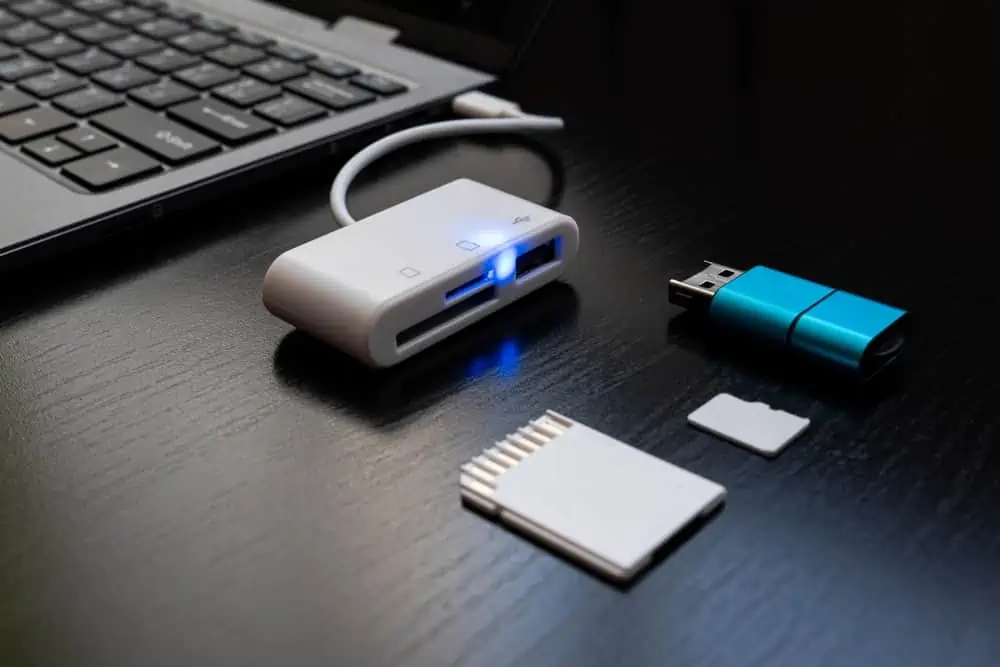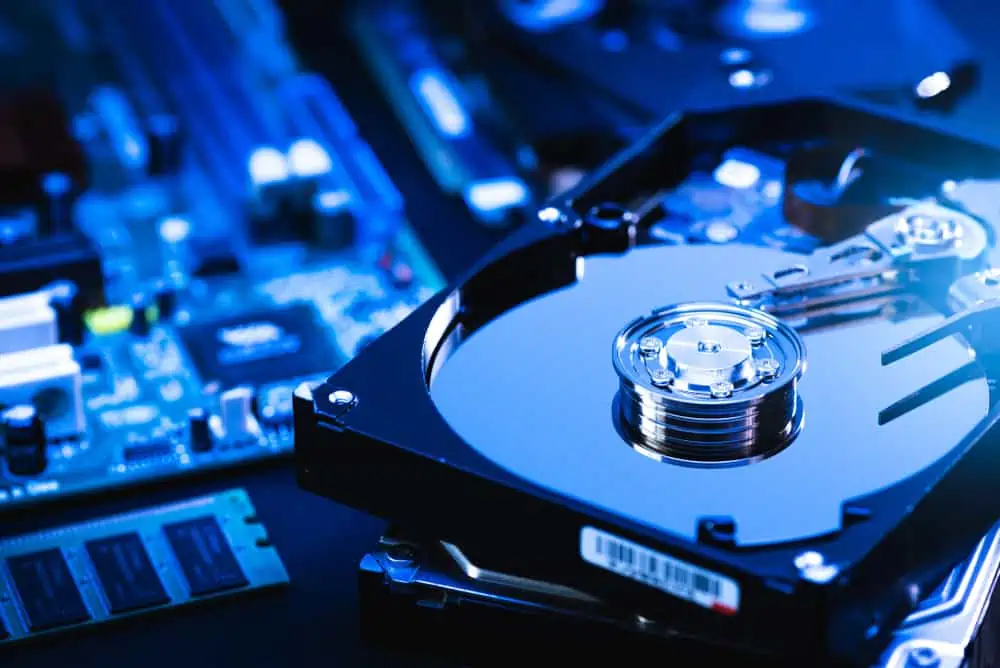Do you want to know every important detail of a TF card before buying one? This article discusses everything you need to know about this portable storage technology.
Overview
As devices get smaller and more compact over time, most storage technology tends to shrink to keep up. One such storage technology is the SD (Secure Digital) card, which was released in the late 1990s.
Now, you must wonder how the TF card is related to the SD card. Well, a TF card is the smaller version of the SD card, thus also known as a microSD card.
A TF card stands for TransFlash card, a removable storage device commonly used in mobile digital devices like smartphones, tablets, and cameras. Furthermore, this storage technology was developed in 2004 by SanDisk Corporation.
It is one of the smallest flash memory cards you can find on the market today – it measures only 11mm x 15mm x 1mm in size. Moreover, it is also lightweight, as with other types of SD cards.
Thereby making it easy to carry around. Additionally, the TransFlash card is available in various storage sizes, ranging from a few megabytes to several gigabytes.
However, the most common storage capacities for a TransFlash card include 2 GB, 4 GB, 8 GB, 16 GB, 32 GB, 64 GB, and 128 GB.
That being said, the TransFlash card uses the same basic technologies as other flash memory cards. These technologies include NAND flash memory and a controller chip.
It also uses a metal contact area to read and write data. In addition to that, a TF card is a non-volatile memory device, meaning it retains data even when the power is turned off.
Features of TF Cards
Considering the fact that a TransFlash card is the smaller version of the standard SD card, it has most of the features of an SD card. Below are five of the significant features of this storage technology.
It is Lightweight and Small
A major feature of this storage technology is its compact size and lightweight. Typically, a TF card measures around 15 mm x 11 mm x 1 mm (W x H x D), making it easy to carry around.
Hence, you can store this storage technology in your wallet or attach it to your keychain. This way, you will always have your essential data and information with you wherever you go.
Compatible with Most Devices
The TransFlash card is compatible with numerous digital devices, including smartphones, digital cameras, and tablets. This makes transmitting data between several devices easy without worrying about compatibility issues.
As a matter of fact, you can use a TF card in a device that supports other versions of the SD card, like a laptop. However, you will need an SD card adapter to do that.
Besides, because of its compatibility with several devices, a TransFlash card is mostly considered a means of storage expansion or secondary storage. Thus, if your device runs out of system storage, this storage technology can be of great help.
It Retains Data for a Long Time
The long data retention period of a TransFlash card is one of its most essential features. This is because it ensures that your data is safe and secure even if you don’t use the card for an extended period.
For instance, this storage technology can retain data for up to 10 years. Therefore, you can store important documents, videos, or photos on your TF card for an extended period without worrying about losing them.
Supports Major File Systems
A file system is a technique operating systems use to organize, store, and access data on a storage device. Fortunately, the TF card is compatible with two major file systems, which are FAT32 and exFAT.
Major operating systems, including Windows, macOS, and Linux, support these file systems. Therefore, thanks to its compatibility with those file systems, a TransFlash card can transfer files between several major operating systems.
It Is the Same as a MicroSD Card
TransFlash cards are microSD cards under a different name. Honestly, there are no differences between a microSD card and a TF card.
Therefore, you can use them interchangeably. For example, if you have a TF card but your device only supports microSD cards, you can use the TF card.
It will work seamlessly due to the fact that they support the same standard. Besides, there is no specific TransFlash card reader or slot.
Pros of TF Cards
It Has a Low Power Consumption
A TF card consumes very little power due to its low operating voltage.
For instance, when reading data, a TransFlash card uses only 0.5 watts of power. Meanwhile, it uses just 1.5 watts of power when writing data.
This means you can use a TransFlash card in your device efficiently without draining your device’s battery.
TF Cards Are an Ideal Storage Expansion Tool
Another significant advantage of a TransFlash card is that it provides expandable storage as it is supported by most devices.
Thus, if you find your device’s storage running low, you can insert a TF card to increase the available storage space. This is very useful for devices that don’t have enough built-in storage.
It is Very Portable
The portability of a TF card is its major advantage over other storage technology.
Due to its small size and lightweight design, a TransFlash card can easily be carried in your pocket or bag. Thereby making it a convenient storage solution on the go.
Hence, using a TransFlash card, you can always have your important files around without stress.
TF Cards are Secure
Most TF cards have built-in security features like password protection and encryption to keep your data safe and secure.
These security features are essential because they protect your data from unauthorized access or theft.
TF Cards Are Cost-effective
Compared to other storage options, TF cards are generally cost-effective.
In fact, the price of TransFlash cards has decreased over time while their storage capacity has increased. Therefore, you can now get a high-capacity TF card for a fraction of the cost of a solid-state drive or an external hard drive.
Cons of TF Cards
Slow Read and Write Speeds
Compared to storage options like HDDs or SSDs, TransFlash cards have relatively slow read and write speeds.
This can make transferring large files a slow process.
TF Cards Are Vulnerable to Physical Damage
Despite being developed to be durable, TF cards are still vulnerable to physical damage.
For instance, if a TransFlash card is handled with force, exposed to water, or subjected to extreme temperatures, it can be damaged. Thereby resulting in data loss.
Hence, even though they are durable, you should treat your TransFlash card with care.
It Is Prone to Data Corruption
TransFlash cards are very prone to data corruption, which can lead to data loss.
Data corruption mostly occurs if the card is removed while data is being written to it. Also, you can experience data corruption if the card is not ejected properly from the device.
There Are Numerous Counterfeits
Several brands, both popular and less known, make TransFlash cards.
Therefore, the rate of counterfeit TF cards in the market seems to be very high. Hence, while looking to buy this storage technology, you might purchase a counterfeit without even knowing.
These counterfeits may have a lower storage capacity than advertised. In fact, some may already be corrupted or not work at all.
Thus, it is important to purchase this storage technology from a reliable vendor made by a reputable brand like SanDisk.
It is Prone to Theft
Due to the fact that TF cards are extremely small and lightweight, they can easily be stolen.
If such happens, you will lose every important data stored in the card.
Conclusion
A TF card, a.k.a microSD card, is a versatile and convenient removable memory card that has become very popular today. This storage technology has a small form factor and is compatible with various devices.
Therefore, it has become an essential accessory for anyone who needs to store, transfer, or share digital data on the go. However, while this storage technology has many advantages, it features a couple of disadvantages.
For instance, they are prone to theft and physical damage due to their small size. This can lead to data corruption and loss of data.
Nonetheless, TransFlash cards are a practical, inexpensive, and versatile storage solution that has revolutionized how we share and save data.
Hopefully, this article was helpful, and you found it insightful. Share your opinions with us through the “Leave a Reply” form situated at the bottom of this page.
You could also use the “Was this page helpful?” buttons below to give us your feedback.
Finally, you should check out our Storage & Disk Technology Explained page to get more articles like this one.



